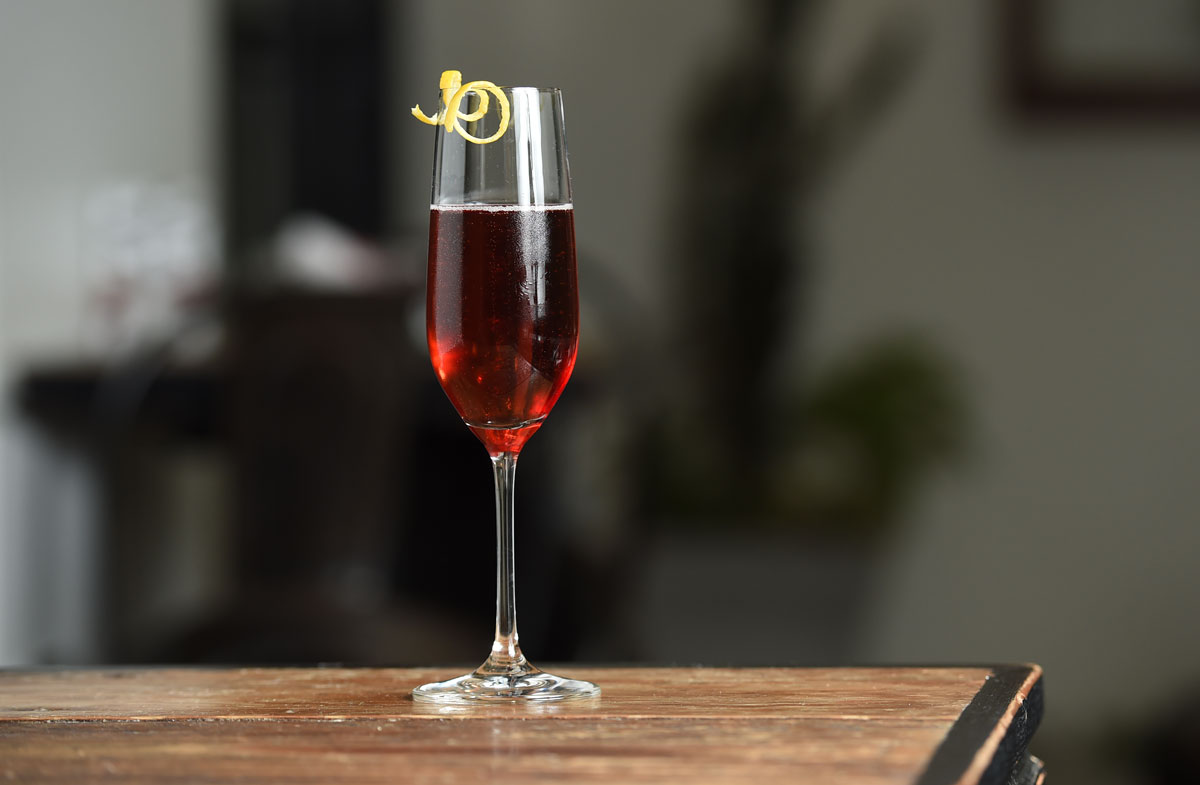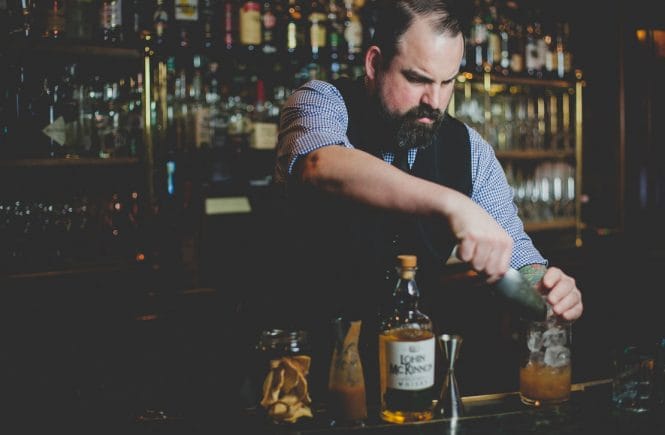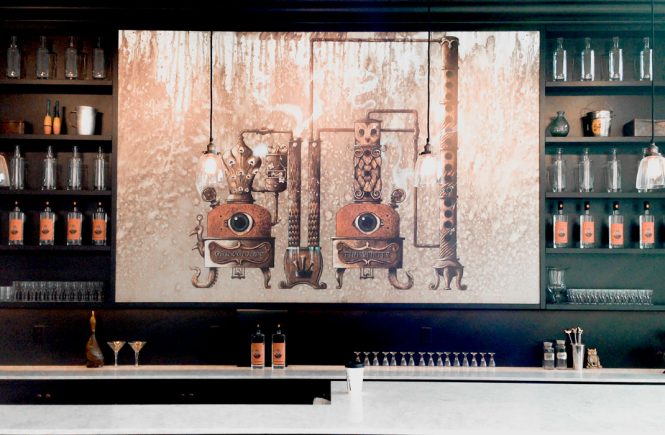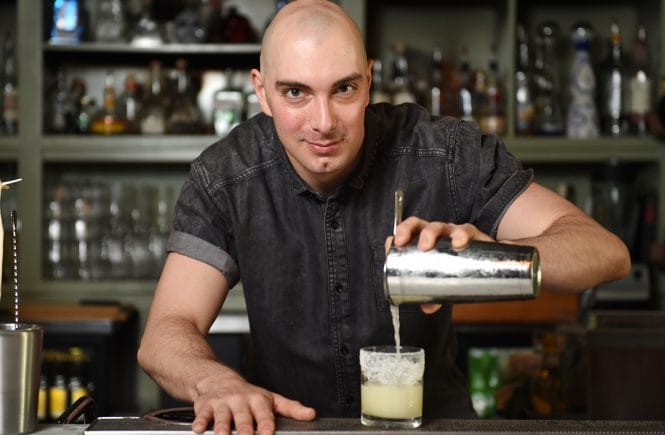Cocktail of the resistance

The Kir Royale (or Royal, if you prefer) is the kind of swanky fizz that could have been conjured up by some posh hotel barkeep trying to impress a well-heeled customer. In fact, its backstory is much more thrilling than that.
A splash of crème de cassis (blackcurrant liqueur) topped with Champagne and served in a flute, the Kir Royale is an elegant drink, perfect for garden parties, festive occasions and recovering from shopping sprees along the Champs Elysées. It is the bubbly descendant of the Kir, a simple concoction of tart white wine, traditionally the bone-dry Aligoté de Bourgogne, mixed with the aforementioned crème de cassis.
According to Difford’s Guide, the origins of the Kir date back to 1904 when a bartender in Dijon, France, mixed white wine and crème de cassis together and called it the “Cassis Blanc.” But it was during the Second World War, when Burgundy was occupied by the Nazis, that it became much more than that. It became, in fact, the cocktail of the resistance.
The way the story goes, in 1940, the Nazis marched into Dijon and seized most of Burgundy’s fabled red wines for their own enjoyment. Many of the local leaders fled, but one man, a Catholic priest named Canon Felix Kir, remained and became a fierce resistance fighter. It is said he helped some 4,000 prisoners of war escape from a nearby camp. At various times, he was arrested, condemned to death and seriously wounded, yet continued to organize resistance activities until the war ended in 1945.
One of those acts of resistance was to defiantly reclaim the red wine the Nazis had confiscated, or at least as close a facsimile as he could devise. According to the Wall Street Journal, he combined the sweet local liqueur with a tart white wine the occupiers seemed to disregard and proudly announced the rosy-hued drink as the official beverage of Dijon’s city hall.
As the war ended, Kir was awarded the French Honour Cross, made a member of the Legion d’honneur and elected Dijon’s mayor, a post he held until his death in 1968 at the age of 92. While in office, Kir used every opportunity to promote local products, especially the white wine and blackcurrant mixture that eventually, and rightly, bore his name. He would serve it at all municipal functions, which must have made the job of governance much more pleasant than it so often is.
There’s no word on when someone thought to replace the still wine with Champagne and call it a Kir Royale, but it was a decidedly good idea. The bubbles brighten the sweet liqueur and make the whole a deliciously celebratory beverage. The blackcurrant liqueur, too, has at times been replaced with other flavours, but the classic remains a classic for good reason.
In this season of elections, polarization and toxic politics, the Kir Royale is at least one thing we can all agree on.
VARIATIONS ON A KIR
Want to kick up your Kir? Try these versions instead.
Cidre Royale, Kir Breton, Kir Normand: Apple cider instead of wine; optional shot of Calvados.
Communard or Cardinal: Red wine instead of white.
Kir Bianco: Sweet white vermouth instead of wine.
Kir Impérial: Chambord or other raspberry liqueur instead of crème de cassis.
Kir Pêche: Peach liqueur instead of crème de cassis.
Kir Bière: Lager instead of wine.
Pink Russian: Milk and bad choices instead of wine.
Make it at home:
Kir
Kir Royale
—by Joanne Sasvari




